New Bommer Canyon garden tells story of Irvine’s ranching past, restoration future
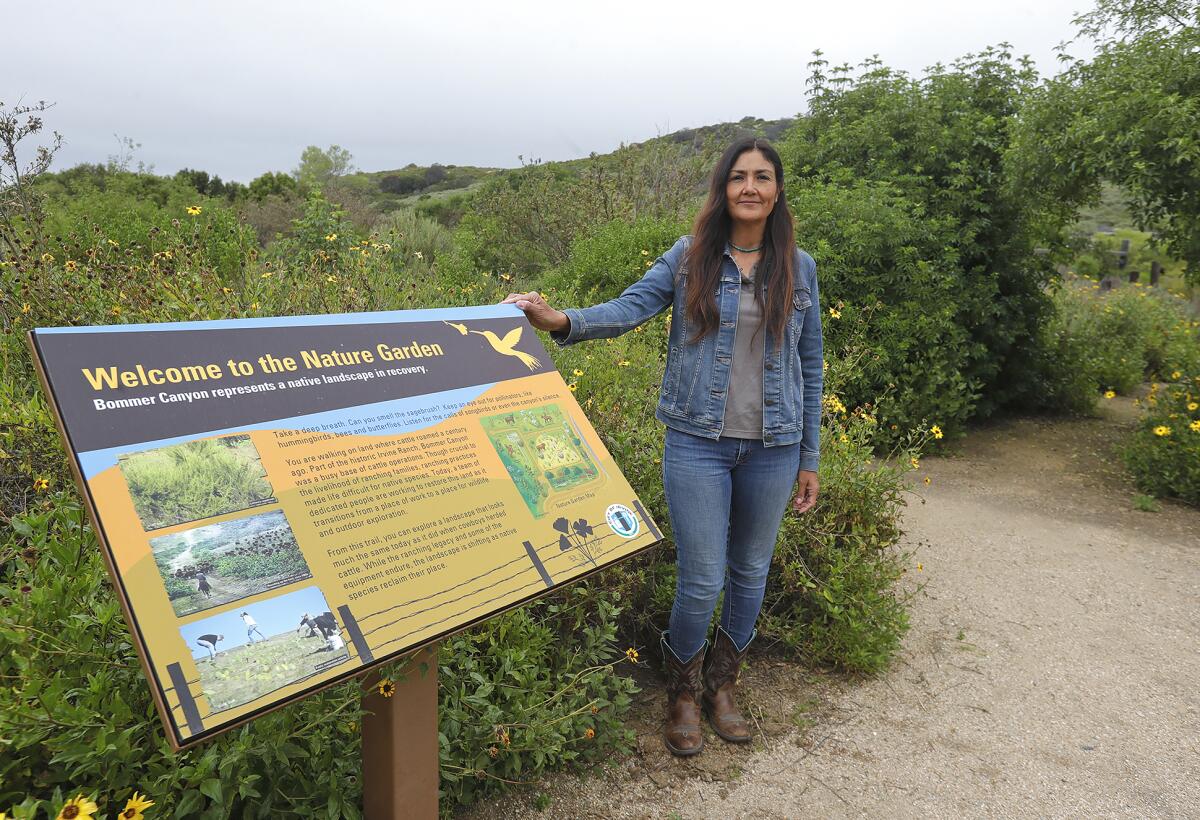
- Share via
Visitors to Irvine’s Bommer Canyon Preserve may have hiked or bicycled along its low-rolling hills, accessible by a complex series of trails that lead all the way out to the coast.
They may have admired the space’s centuries-old oak trees or sat in the shade of a sycamore grove. They have even likely read plaques memorializing the spot as part of an open space preserve recognized as a natural landmark by state and federal lawmakers.
But even regular users of the park may have missed a new addition to the property — a small interpretive nature garden, where the land has been restored by native plantings after serving more than a century as a cattle camp on the Irvine Ranch.
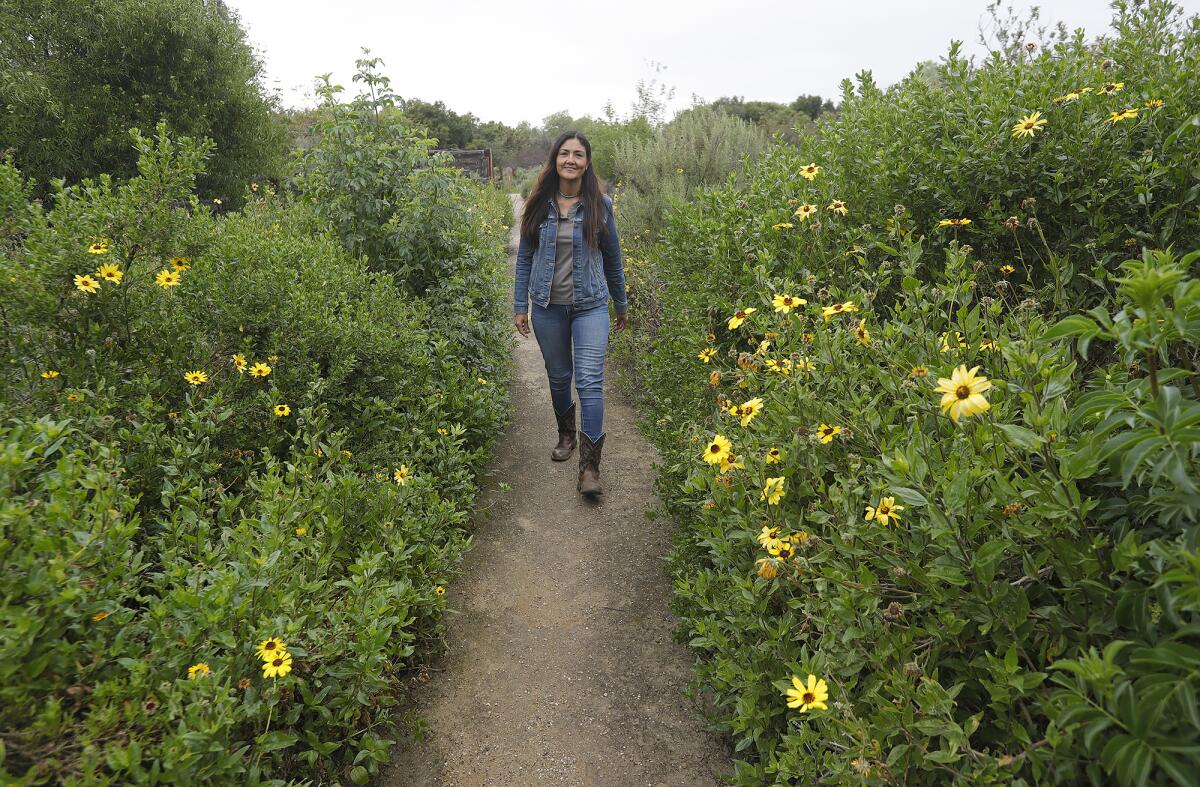
Reachable on foot by taking the Bommer Meadow Trail to the Nature Loop Trail, and by car on Wilderness Access Days on the third Saturday of each month, the Bommer Canyon Nature Park takes visitors on a journey through the history of the area, its ranching past and rich biodiversity.
During a recent visit, Matilde De Santiago, a project coordinator with the nonprofit Irvine Ranch Conservancy, explained how staff and volunteers replanted the area as part of the group’s mission to manage the land on behalf of the city of Irvine.
“This used to be an area of cattle ranching, but now it’s an area of restoration,” De Santiago explained. “The area is transforming back to what it originally was. The diversity of plant life and wildlife make it really special.”
Many of the plants visitors can see at the site were placed there by IRC volunteers and members of Irvine’s High School Youth Action Team, using seeds and clippings from nearby native plant nurseries maintained by the conservancy.
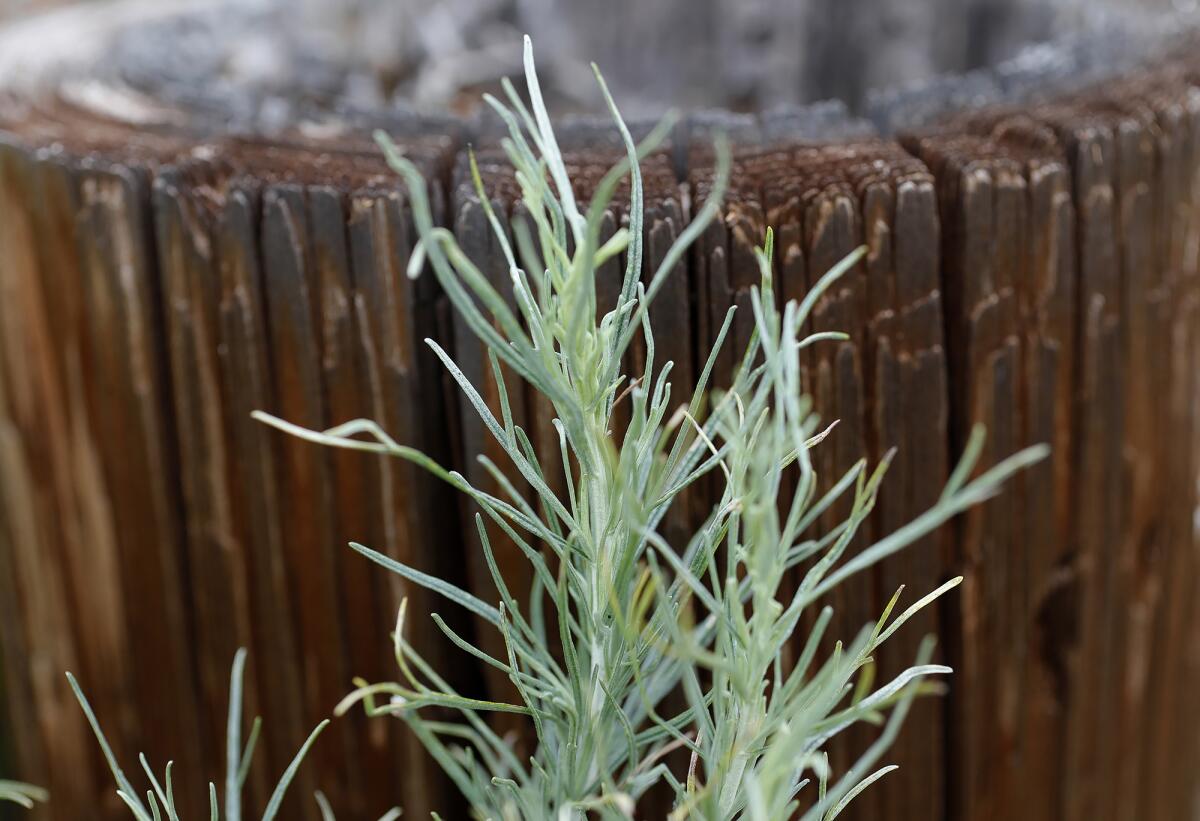
A bulk of the work was done last year. Today, California sagebrush, coast sunflower and purple needlegrass, encouraged by recent rains, thrive in a horticultural tableau that resembles the landscapes once occupied by indigenous people before Spanish settlers arrived with agricultural intentions.
“The Tongva were the first people who lived here. But then the Spanish came in and introduced cattle to the region, turning the land into ranches,” De Santiago said.
Signs placed throughout the garden tell the history of Bommer Canyon, a 15-acre portion of the Irvine Ranch used as a camp where cattle were branded, disinfected and inoculated against diseases in the late 1800s and where vestiges of equipment and infrastructure remain to this day.
The placards also provide a broader context for the surrounding land, describing how Uto-Aztecan speaking people migrated to the region 1,500 years earlier, progenitors of indigenous tribes that lived off the wildlands long before Mexican land grants allowed Spanish ranchers to farm in 1837. That use would continue into the early 1990s.
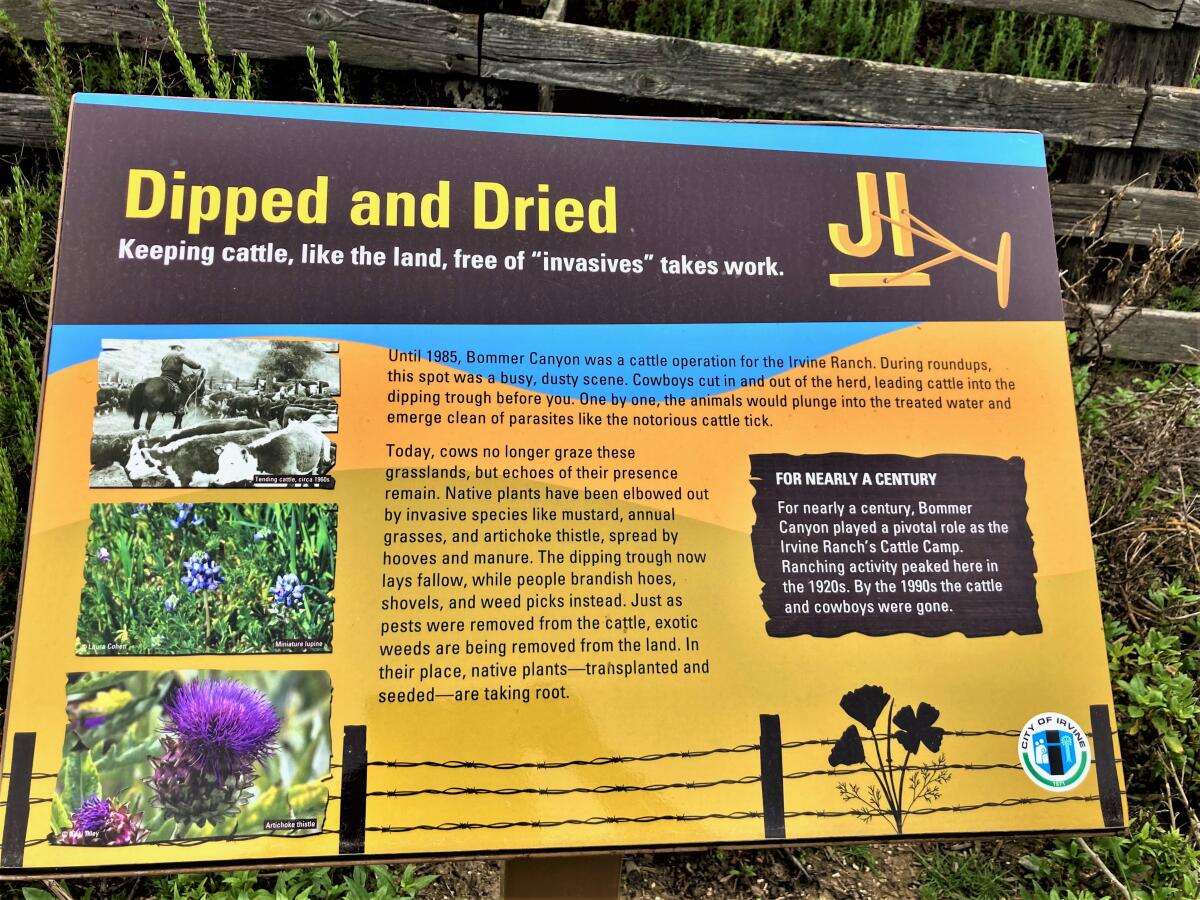
They tell how James Irvine, the city’s namesake and founder of the Irvine Co., purchased a large part of Rancho San Joaquin, as it was then called, in 1864. That land remained in the family for more than a century, and while much of it was later developed, a portion was donated to the city of Irvine and, in 1988, designated by a ballot initiative to remain part of a nature preserve.
While much of the land use is protected under a Natural Community Conservation Plan and cannot be built upon, the nature garden is one spot where the remnants of the ranch days have been allowed to remain.
“For a long time we didn’t have any signs out here, we were just telling visitors what this is,” De Santiago said of the rusty pens and degrading wooden infrastructure of the cattle operations. “Some people knew what it was, but there was no story. Now we’ve given it a context and it just adds to the intrigue of the area.”
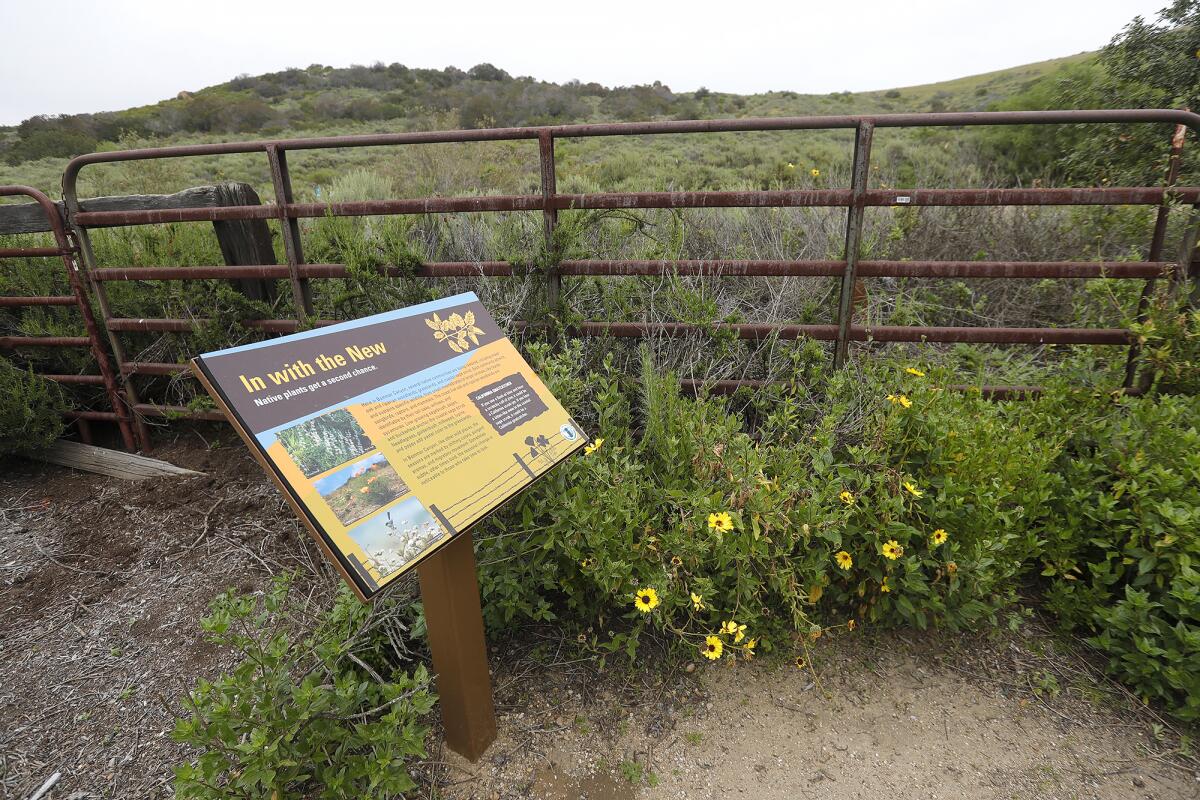
Irvine Ranch Conservancy spokesman Scott Graves explained that as parks and trails systems were created and maintained, the old Cattle Camp area and its relics remained largely untouched, until some in the conservancy began crafting a plan to revitalize the space and use it as a teaching garden.
“The Bommer Canyon Nature Garden is a unique opportunity to showcase the natural history of Orange County to visitors because it’s easily accessible and it’s a nice pleasant area to walk around,” Graves said. “It would be more difficult to tell that story on other trail systems because they’re linear, more spread out and have a more intensive terrain.”
He likened the space to an exhibit that might be found in a natural history museum, with one small exception.
“It’s outdoors, and so you have a living example of plant life. It’s not static — it’s alive out there,” he said. “It’s a reminder these are natural systems and they need protection and stewardship.”
For more information on the Bommer Canyon Preserve, including locations and hours, visit cityofirvine.org/parks-facilities/bommer-canyon-preserve.
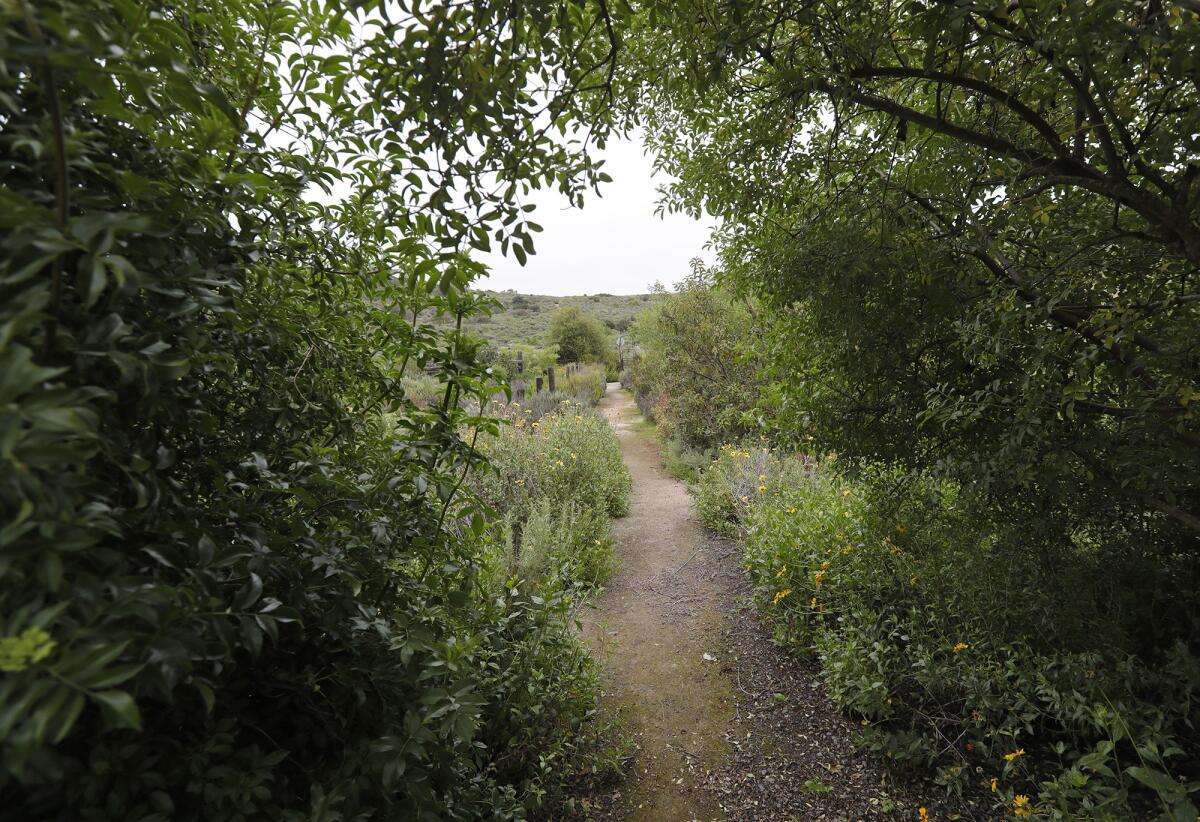
All the latest on Orange County from Orange County.
Get our free TimesOC newsletter.
You may occasionally receive promotional content from the Daily Pilot.




